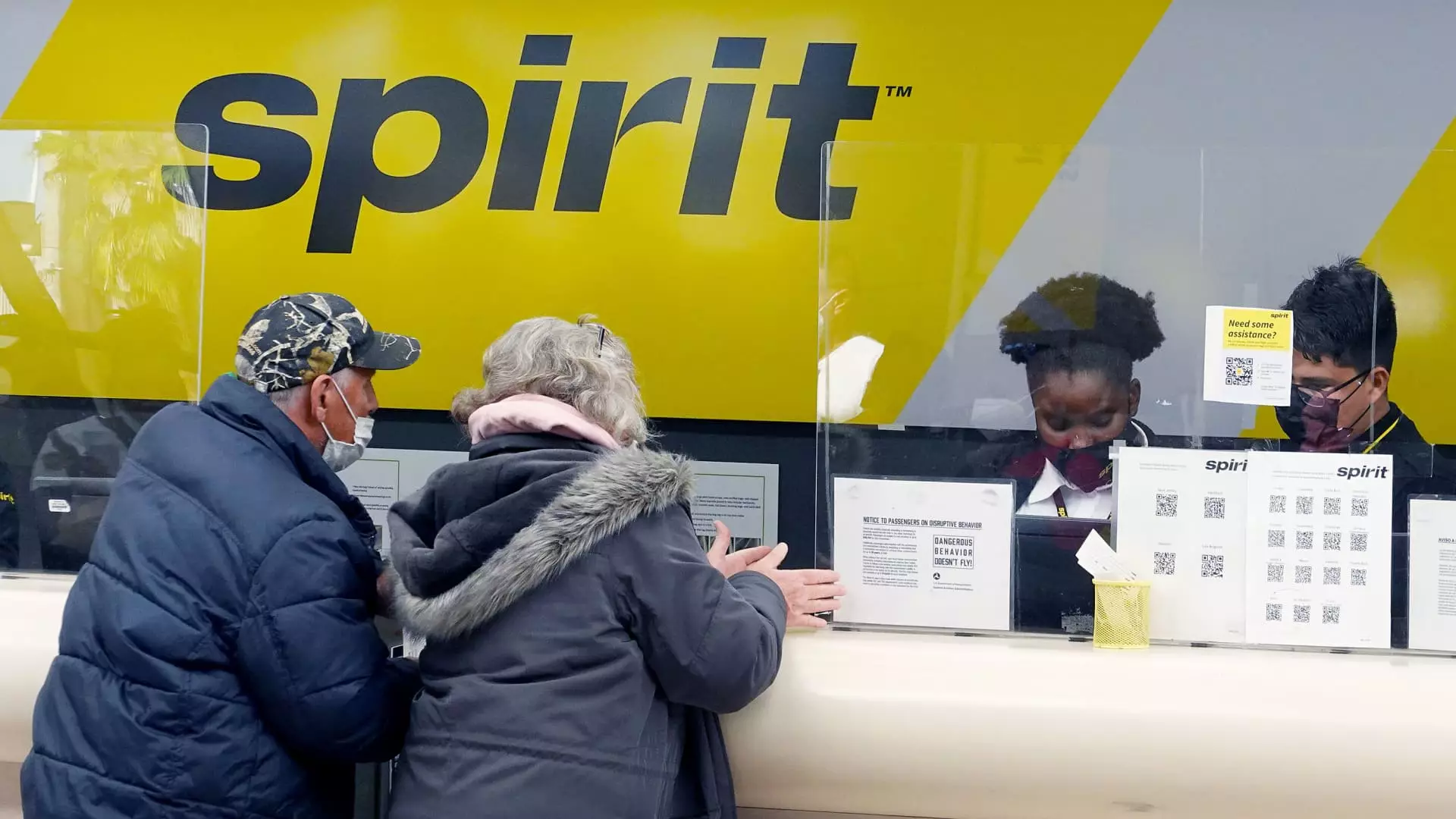Spirit Airlines has long been recognized as a trailblazer in the realm of budget air travel, challenging industry norms and catering to cost-conscious consumers. However, the airline’s recent filing for Chapter 11 bankruptcy protection marks a significant turning point, revealing the financial turbulence plaguing the carrier after years of mounting challenges. Spirited at its inception, the airline now grapples with a perfect storm of misfortunes, including a botched merger, changing consumer demands, and escalating operational costs. Its downfall serves as a cautionary tale within the aviation industry, reflecting the complex dynamics that influence airline sustainability in an ever-evolving marketplace.
On a recent Monday, Spirit Airlines made the announcement that it had successfully negotiated a prearranged bankruptcy deal with its bondholders. This agreement, which includes $300 million in debtor-in-possession financing, aims to guide the airline through its reorganization process. The company reassured customers and stakeholders that operations would continue as normal, facilitating the booking process as the busy holiday season approaches. This pivotal step indicates that while the airline faces immediate financial distress, it also aims to provide stability for its loyal customer base. CEO Ted Christie underlined the importance of this continuity, encouraging travelers to adhere to their plans without fear of disruption.
Nevertheless, while Spirit Airlines articulates a confident exterior, a deeper dive reveals a much grimmer financial state. With its stock plummeting by over 90% this year and multi-million dollar losses compounding since 2019, the airline’s operational integrity is precariously balanced on a knife’s edge. The urgency to address an impending $1.1 billion debt repayment in the coming year created an explosive situation that required immediate action. This leads many to question whether the prearranged bankruptcy plan marks a real recovery trajectory or if it is merely a temporary reprieve from inevitable financial collapse.
Spirit Airlines’ recent struggles have been exacerbated by a failed merger attempt with JetBlue Airways, blocked earlier this year due to antitrust concerns. The $3.8 billion acquisition was expected to enhance the competitive edge of both airlines, positioning them more favorably in a marketplace monopolized by a handful of major carriers. Unfortunately, federal judges assessed the situation differently, placing Spirit in an unanticipated predicament.
The consequences of this merger failure ripple beyond finances. Spirit had previously sought to pursue an alliance with Frontier Airlines, a strategic move that could have helped stabilize its operations and mitigate some of the economic pressures it currently faces. As the airline retraces its steps, analysts speculate that negotiations with Frontier could resume, indicating a potential path forward to recovery. However, the overall uncertainty surrounding such discussions further complicates Spirit’s prospects for lasting stability.
Industry Innovations and the Customer Experience
The low-cost model championed by Spirit Airlines has revolutionized budget travel by enabling consumers to prioritize price over experiences. But as travel trends shift toward more comfort-oriented offerings, the airline’s traditional bare-bones approach has come under scrutiny. In a bid to adapt, Spirit has attempted to introduce bundled fare options, giving flight amenities a much-needed upgrade. Yet, the acceptance of these enhancements amid elevated costs raises questions about the sustainability of the airline’s original model.
Fundamentally, this urgency to innovate in response to consumer preferences reflects a broader trend in the airline industry. As competitors like Delta and American Airlines pivot to accommodate budget-friendly formats, Spirit must pivot quickly. The core dilemma remains: can it retain its identity as a low-fare provider while simultaneously meeting the expectations of modern travelers who increasingly demand more value for their money?
As Spirit Airlines navigates these turbulent waters, its future hangs in the balance. In the short term, the airline anticipates substantial layoffs, indicative of its need to scale back operational expenses amid dwindling margins and cash flow challenges. These decisions could deeply affect the workforce and the overall employee morale within the company.
Equally concerning is the company’s impending delisting from the New York Stock Exchange, signaling a significant shift and waning investor confidence. Furthermore, the anticipated consolidation within the airline industry raises the question of whether Spirit will continue to survive as an independent entity or become a victim of the growing trend towards mergers and acquisitions.
Spirit Airlines is at a pivotal crossroads. By addressing its structural issues and adapting to evolving consumer dynamics, the airline can pivot towards a more sustainable business model. However, success is contingent upon effective leadership decisions and the ability to restore trust among valued customers and stakeholders. Only time will tell if Spirit Airlines’ legacy as a budget travel icon can withstand the test of this crisis.

